Construct Binary Tree From Preorder And Inorder Traversal
Question
Given two integer arrays preorder and inorder where preorder is the preorder traversal of a binary tree and inorder is the inorder traversal of the same tree, construct and return the binary tree.
Example 1:
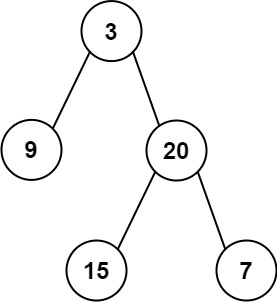
Input: preorder = [3,9,20,15,7], inorder = [9,3,15,20,7]
Output: [3,9,20,null,null,15,7]
Example 2:
Input: preorder = [-1], inorder = [-1]
Output: [-1]
Solution
Nature of the traversal
To solve this question, we first need to revise inorder traversal and preorder traversal.
In-order traversal
For inorder, we visit the left -> root -> right. This means given an array of inorder traversal, we knows that at one index, whatever on the left handside will be the left elements in the tree. Whatever on the right handside will be the right elements in the tree
For example if we have this tree:
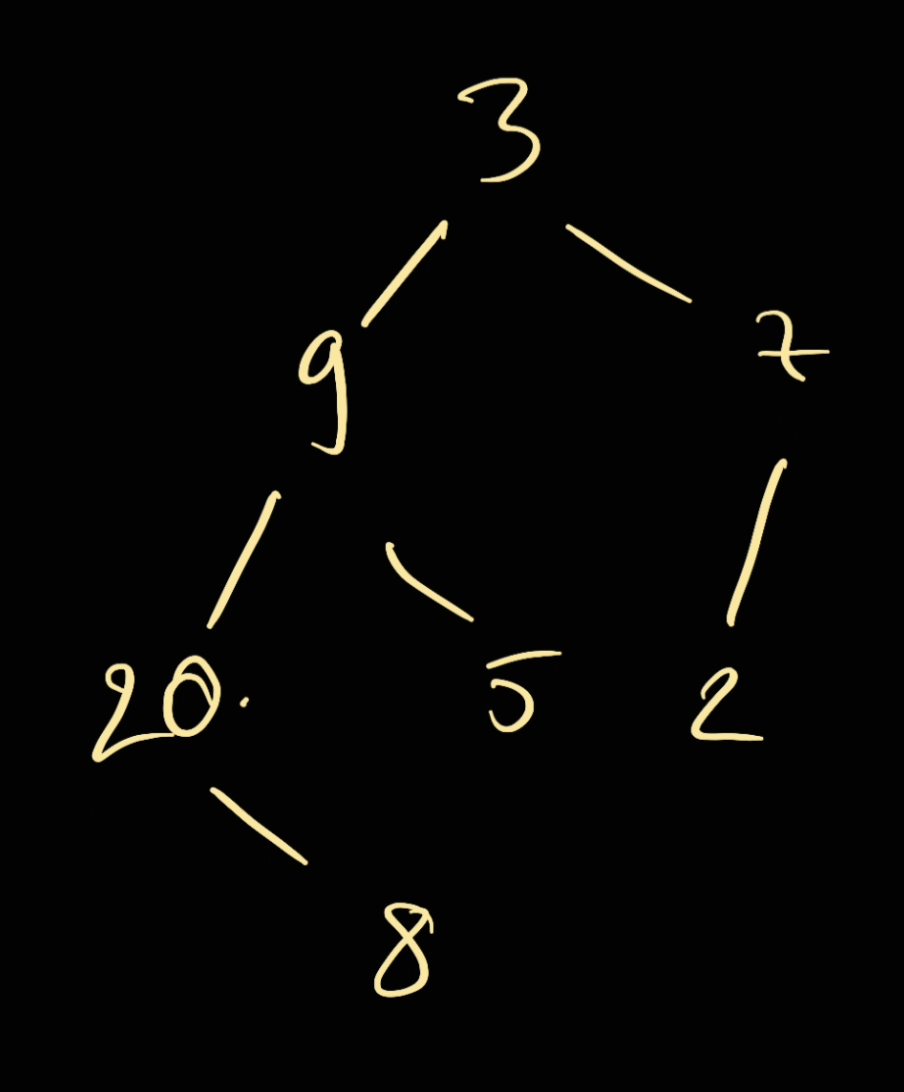
We have our in-order traversal (left -> root -> right) would be:
[20, 8, 9, 5, 3, 2, 7]
So pick 1 point, let say 2:
v
[20, 8, 9, 5, 3, 2, 7]
--------left---- -right-
We can see that everything on the left handside of 2: (20, 8, 9, 5, 3) would also appear on the left handside as the tree above. Everything on the right handside of 2 (7) would appear on the right handside in the tree above.
This holds true for any other node as well.
Pre-order traversal
For pre-order traversal, we go root -> left -> right. As a result, we always visit the root first in the order of left -> right. So if we go from left -> right, we should always visit the root first and then its children (and then the right).
Yes it has the right side as well so we need to becareful.
Let revise the example above:
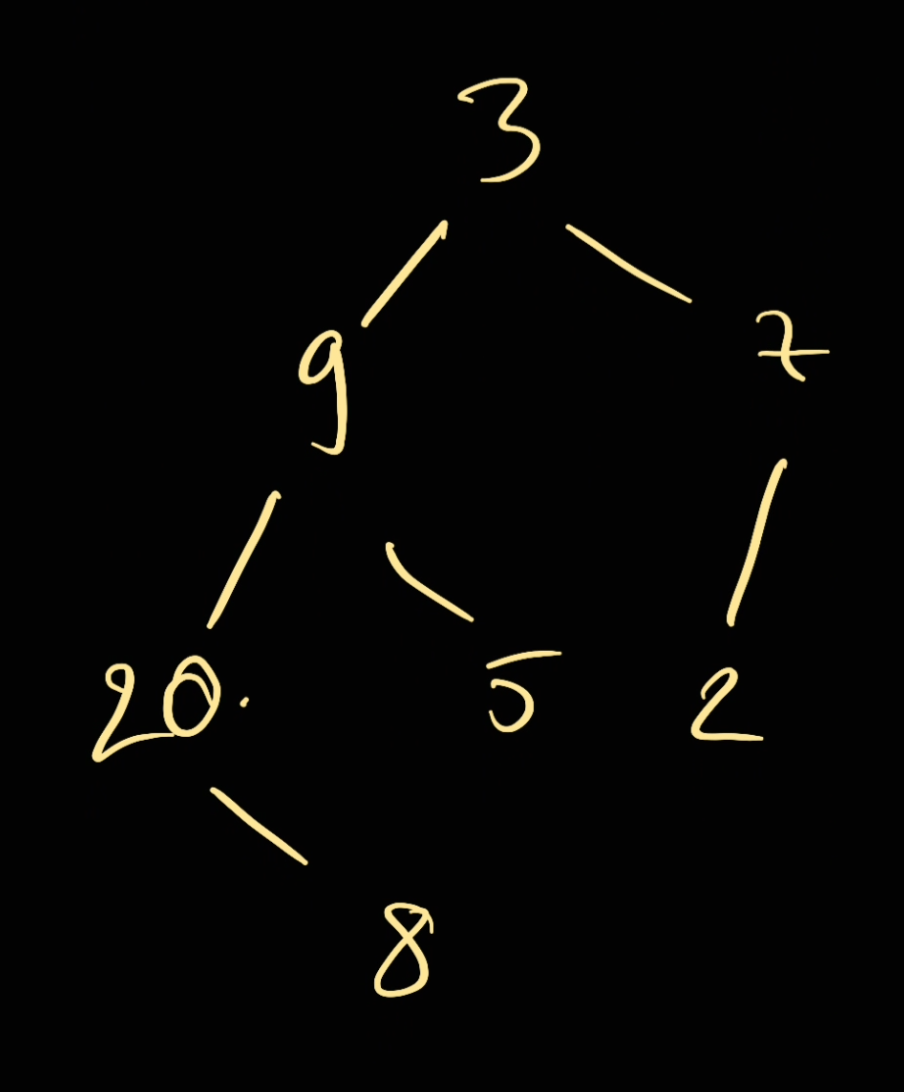
We have our pre-order traversal (root -> left -> right)
[3, 9, 20, 8, 5, 7, 2]
So for example we pick a note in here (20), we can see that 20 is the root of 8 because we visit root and then left and then right.
v
[3, 9, 20, 8, 5, 7, 2]
However, we don't know if 8 is on our left or on our right. All we know is 20 is the root of 8. Wait, but does that mean 8 is also the root of 5 or 20 is also the root of 5 as well?
[!important]
Yes, we don't know! Sometimes it's theroot, sometimes it's just on therightside. So in this case, technically speaking.20is either the root of8or8is just simply on the right side of20.
So how do we know if it's the root or just on the right side? That's when the in-order comes in.
Considering both in-order and pre-order and try to build the tree out of it.
Let's get the same example above. For example, we have
Preorder: [3, 9, 20, 8, 5, 7, 2]
Inorder: [20, 8, 9, 5, 3, 2, 7]
First, we know for sure 3 is going to be the root of this tree because pre-order traversal will always visit the root first. Therefore we have:
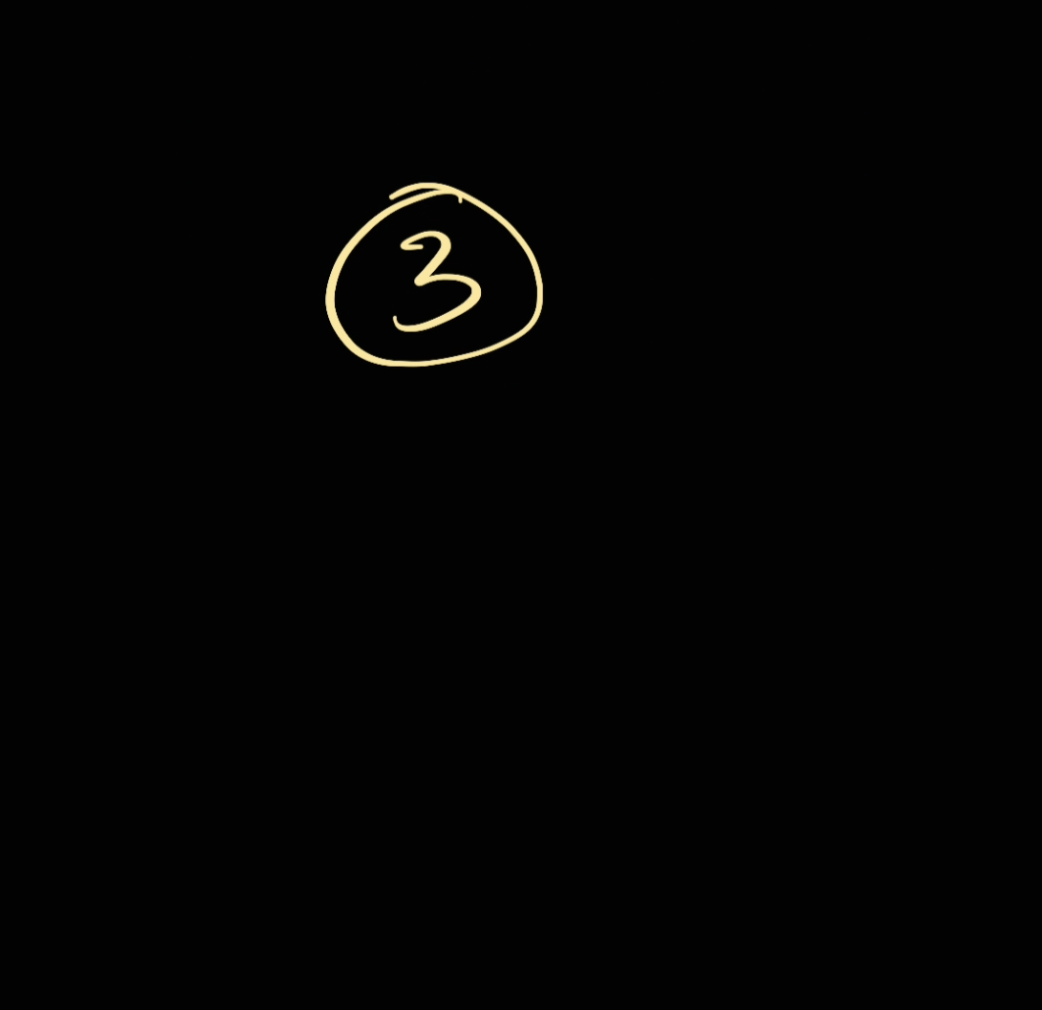
Now based on the Inorder list, we can see that (20, 8, 9, 5) are in the left of 3 whereas (2, 7) are in the right.
v
[20, 8, 9, 5, 3, 2, 7]
-----left---- -right-
Therefore, we can conclude this following:
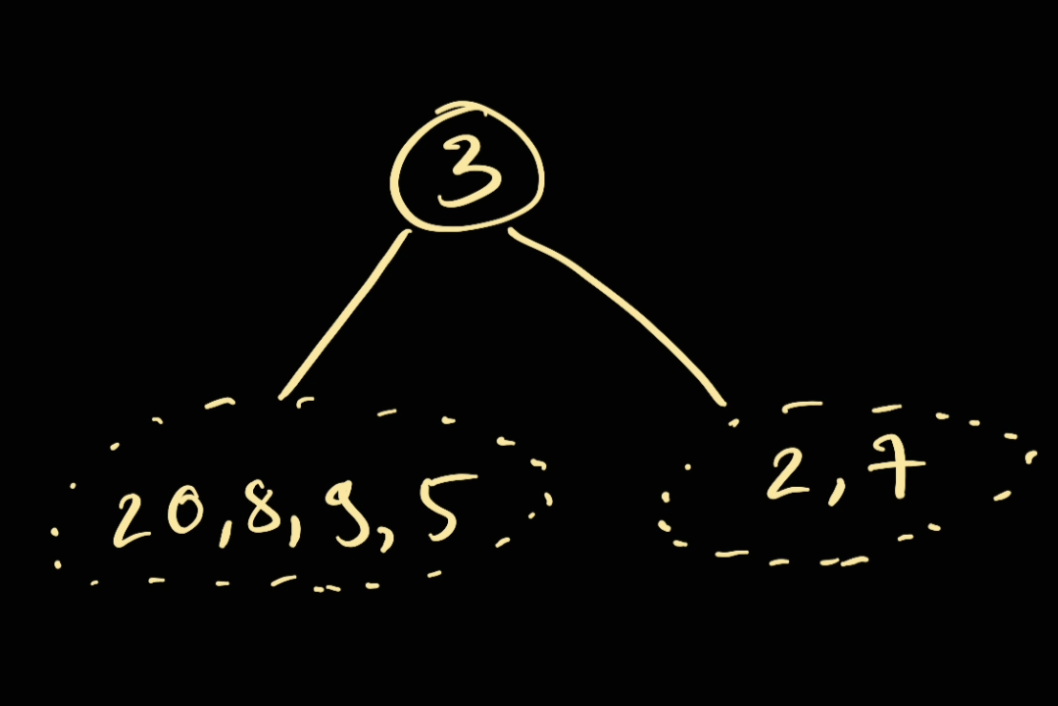
So on the left handside, amongst 20, 8, 9, 5 there one of them should be the next root. Similarly either 2,7 should be the next root.
Let's visit our pre-order list:
[3, 9, 20, 8, 5, 7, 2]
And come back to the previous question:
Wait, but does that mean
8is also the root of5or20is also the root of5as well?
Well, we can't answer it yet. But if you compare between (5, 7, 2), we know that 7 and 2 will be on the right side of 5
So applying this concept, we just keep digging futher until we know.
Next candidate for our pre-order list is 9. Since 9 is within this list of (20, 8, 9, 5), we conclude that 9 will be the root of all of these numbers.
Now look at this inorder list, we have (20, 8) on the left handside, and (5) will be on the right handside
v
[20, 8, 9, 5, 3, 2, 7]
-left- -r-
So we have
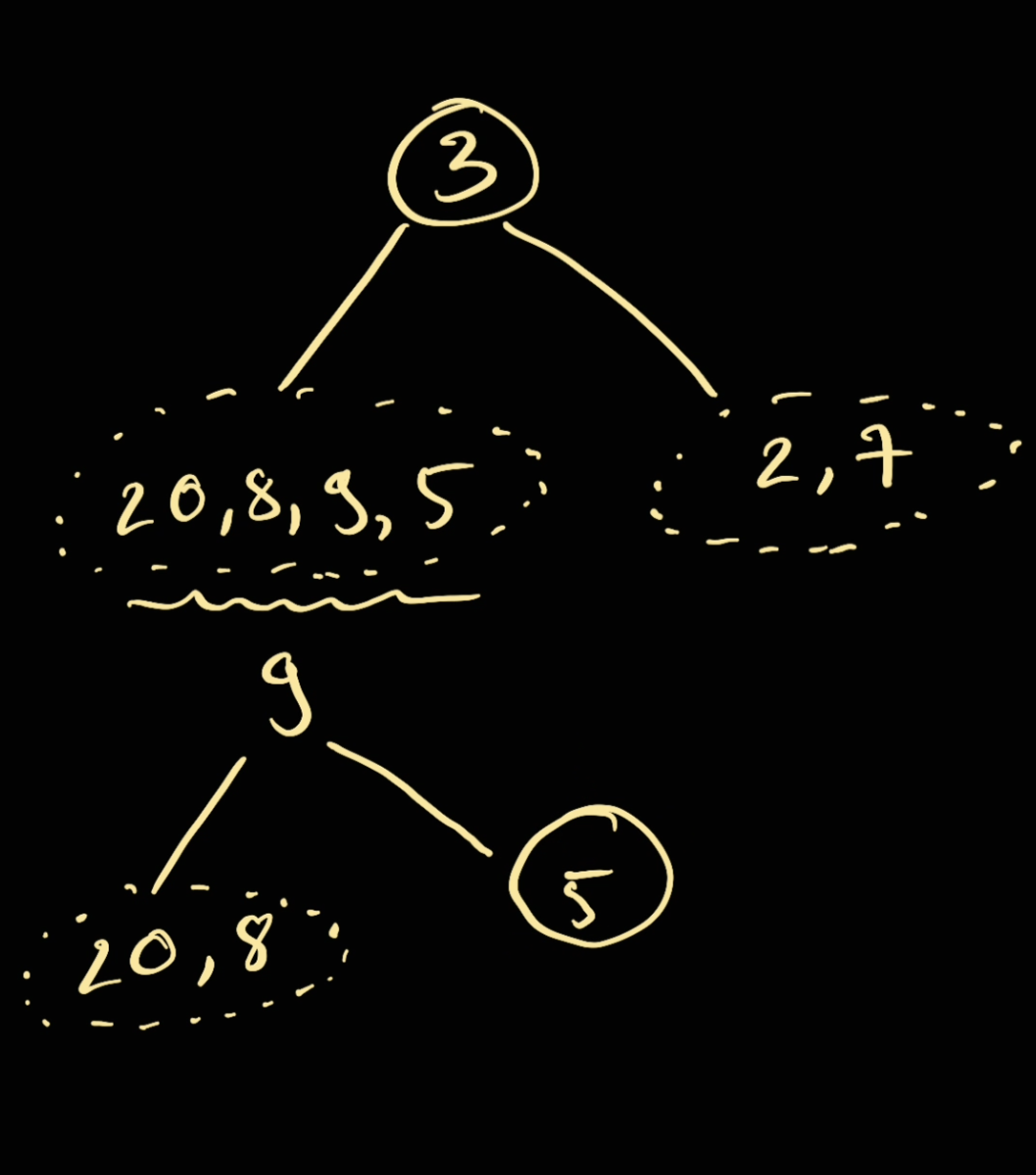
Now we can answer our previous question: no, 8 will not be the root of 5 and neither 20
[!important]
Note: it's important that when we're looking for theroot, we only take in consideration the number within our range. So in this case for example in the group of20, 8.Preorder: [3, 9, 20, 8, 5, 7, 2]We should only consider
20, 8as the root and not5,7,2at all. Therefore we need to slice our array ofpreorderto be only20, 8.
Implementation
class App:
def buildTree(self, preorder: List[int], inorder: List[int]) -> Optional[TreeNode]:
if not preorder or not inorder: return None
currentRootValue: int = preorder[0]
root = TreeNode(currentRootValue)
indexCurrentRootValue = inorder.index(currentRootValue)
leftInorder = inorder[:indexCurrentRootValue]
rightInorder = inorder[indexCurrentRootValue + 1:]
root.left = self.buildTree(preorder[1 : 1 + len(leftInorder)], leftInorder)
root.right = self.buildTree(preorder[1 + len(leftInorder):], rightInorder)
return root
Time complexity: $O(n^2)$
- Every single element we need to visit 2 array. For every single time need to do an
index()that will take $logn$ and slice and so on
Space complexity: $O(n \times n) = O(n^2)$
- For space complexity, we are recursionly loop through 2 branches
left, rightfor each node. And then we also bring our array over (2 arrays ofn) element worst case so it's going to be $O(n^2)$
Note: in here as explain above, we only wants to pass the relevant preorder to the subtree. So for example in the case where we have
Preorder: [3, 9, 20, 8, 5, 7, 2]
Inorder: [20, 8, 9, 5, 3, 2, 7]
root = 3
leftInorder = [20, 8, 9, 5]
rightInorder = [2, 7]
Therefore, the possible roots candidate of 7 and 2 should be 7,2. Which is 4 elements (size of the left inorder) away from 3
Optimisation
1. Quick find the length of leftInorder
As we see in the above, the length of leftInorder is len(20, 8, 9, 5) == 4. However another way to find this length is just simply the index of 3:
index 4
v
Inorder: [20, 8, 9, 5, 3, 2, 7]
-----------
there must be 4 elements here
Therefore we can just simply replace len(leftInorder) == indexCurrentRootValue
class App:
def buildTree(self, preorder: List[int], inorder: List[int]) -> Optional[TreeNode]:
if not preorder or not inorder: return None
currentRootValue: int = preorder[0]
root = TreeNode(currentRootValue)
indexCurrentRootValue = inorder.index(currentRootValue)
root.left = self.buildTree(preorder[1 : 1 + indexCurrentRootValue], inorder[:indexCurrentRootValue])
root.right = self.buildTree(preorder[1 + indexCurrentRootValue:], inorder[indexCurrentRootValue + 1:])
return root
2. Use two pointers to define index instead of slicing and 1 hashmap
As we can see, we can simply optimise by using 2 pointers to define the index with a hashmap to quickly find the index of the element in the array without having to do .index() and slicing.
Therefore we have this following code:
class App:
preorderIndexMap: Dict[int, int]
inorderIndexMap: Dict[int, int]
def buildTree(self, preorder: List[int], inorder: List[int]) -> Optional[TreeNode]:
self.preorderIndexMap = { number: index for index, number in enumerate(preorder) }
self.inorderIndexMap = { number: index for index, number in enumerate(inorder) }
self.preorder = preorder
return self._buildTree(0, len(preorder), 0, len(inorder))
def _buildTree(self, preorderStartIndex, preorderEndIndex, inorderStartIndex, inorderEndIndex) -> Optional[TreeNode]:
if preorderStartIndex >= preorderEndIndex or inorderStartIndex >= inorderEndIndex: return None
currentRootValue: int = self.preorder[preorderStartIndex]
root = TreeNode(currentRootValue)
indexCurrentRootValue = self.inorderIndexMap[currentRootValue]
inorderLength = indexCurrentRootValue - inorderStartIndex + 1
root.left = self._buildTree(preorderStartIndex + 1, preorderStartIndex + inorderLength, inorderStartIndex, indexCurrentRootValue)
root.right = self._buildTree(preorderStartIndex + inorderLength, preorderEndIndex, indexCurrentRootValue + 1, inorderEndIndex)
return root
Time complexity: $O(n + n) = O(n)$
- For each element to build, we visit twice — one at the preorder list and one at the inorder list
Space complexity: $O(n)$
- To keep track of the index map